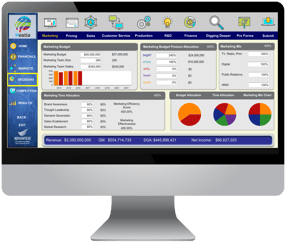In times of rapid and disruptive change such as we are living through in 2018 and beyond, many  progressive business leaders are exploring ways of reinventing their legacy businesses so they don’t miss out on opportunities to grow, sustain, and in some cases, survive. To some business leaders, “reinvention” means a radical and disruptive evolution, and to others it means a pivot to a new value proposition and possibly a new set of customers. In my Business Acumen workshops, I often cite two different and unique examples of companies that have done both; the Kelley Blue Book, and Lego.
progressive business leaders are exploring ways of reinventing their legacy businesses so they don’t miss out on opportunities to grow, sustain, and in some cases, survive. To some business leaders, “reinvention” means a radical and disruptive evolution, and to others it means a pivot to a new value proposition and possibly a new set of customers. In my Business Acumen workshops, I often cite two different and unique examples of companies that have done both; the Kelley Blue Book, and Lego.
For many years, the Kelley Blue Book was one of the key drivers of new car sales because it provided car dealers with a “fair market value” on the used car that was being traded in as part of the new car purchase. This paper-based tool was published and distributed regularly, but even in the most efficient case the data was months if not years behind in terms of trends and any sort of data analytics. Unlike other paper-based tools of the time such as the White Pages and Yellow pages that struggled with the dawn of the digital age, the Kelley Blue Book evolved and embrace technology and today has created one of the most important digital brands in the automotive business ecosystem.
Lego, on the other hand, took a different tact in the age of digital disruptions. Instead of trying to create some sort of digital version of Lego, they doubled-down and entered into license agreements to make Star Wars and Batman versions of Lego opening up a new world to parents and children who love the tradition of Lego and the modern-day trend of super heroes and the renaissance of the Star Wars franchise.
At its most basic level, business acumen is the ability to understand how a business makes money. Before being able to reinvent the business, you must know the answers to the following three questions:
What is a successful business model?Many global businesses are highly complex, matrixed organizations that are overly complicated and confusing to employees and more importantly to customers. It doesn’t have to be that hard; a good business model essentially has five key elements:
- A strong, differentiated value proposition
- Identified and reachable customer segments
- Operational capabilities to create long-term and sustainable profit
- Infrastructure to support the business and growth
- Talent to execute the strategy
One has to look no further than the sad story of the iconic brand of Kodak which is the poster child for companies missing the signals of change. Even though one of their very own R&D engineers invented the technology for digital photography, the leaders of Kodak looked at the market and determined there was no need to pursue the new technology and cannibalize their successful camera, film, and photographic paper business.
The answer to the question is very simple. You need to start the process of changing every day by creating a culture that challenges the status quo and seeks new and unique ways of enhancing the value proposition.
What skills are needed to make the transition?Too many business leaders and too many employees think that coming up with new strategies and business models are the jobs of a select few executives who sit in an insulated ivory tower which couldn’t be more wrong. Everyone in the organization needs to be involved in the process of evolving and reinventing the business and there are two critical skill sets that are required to being to create successful transformation; Business Acumen skills to understand, set, and measure success, and Business Leadership skills to lead and coach people through change and build resilience.
How business simulations facilitate the change through skill development
A pilot doesn’t learn to fly a plane by sitting in a classroom or reading a manual; the pilot learns how to fly a plane by going through intensive flight simulators that provide unique experiences and the ability to try different strategies and react to changes in a risk-free environment. Business simulations do the exact same thing except that they enable all employees to learn how to fly a business. By setting and executing a strategy in a simulated marketplace, participants learn about value propositions, customer segments, organizational capabilities, resource management, and human capital management that build the skills that are needed back in the real world to think about and then execute the reinvented business model.




